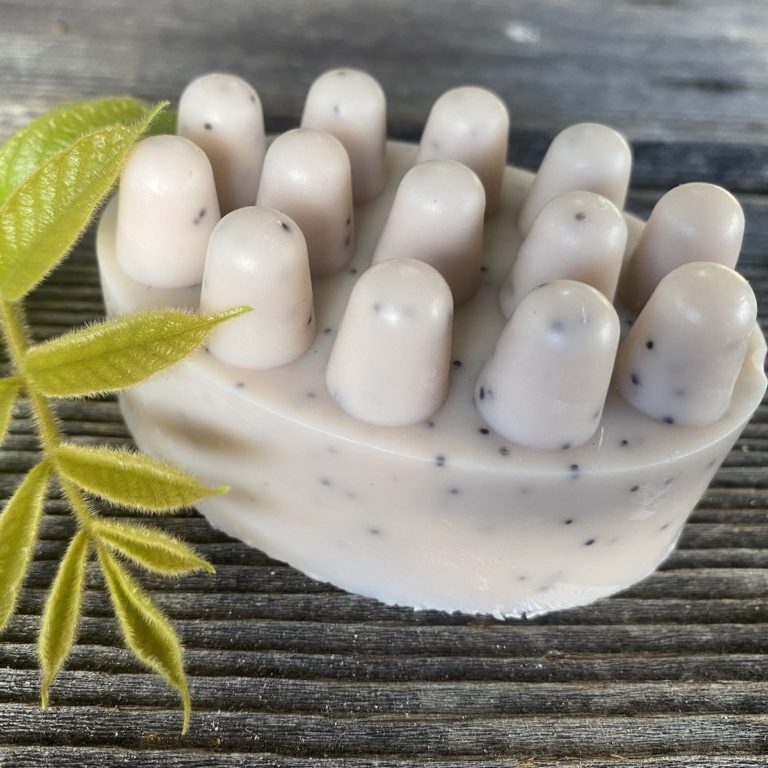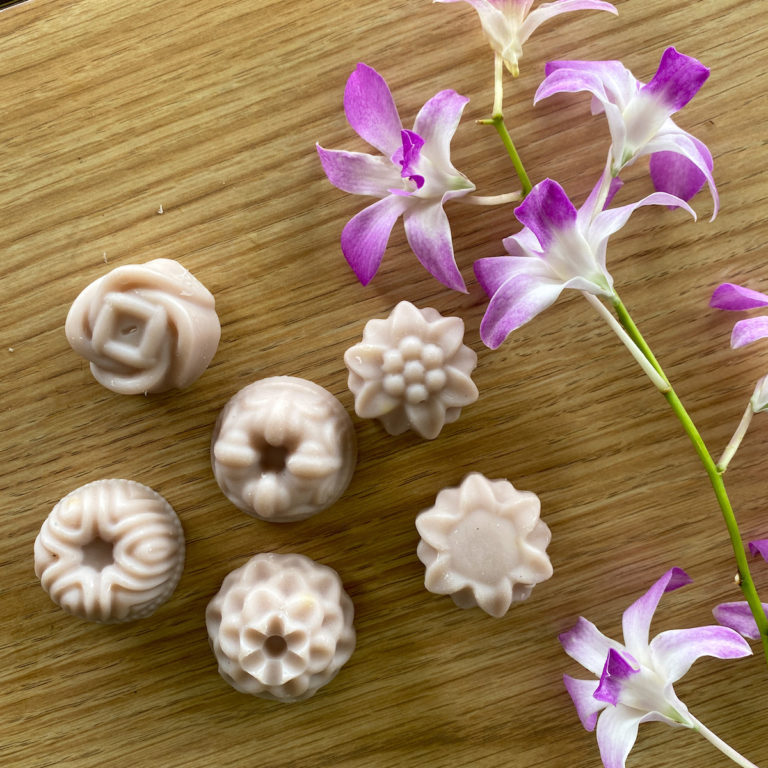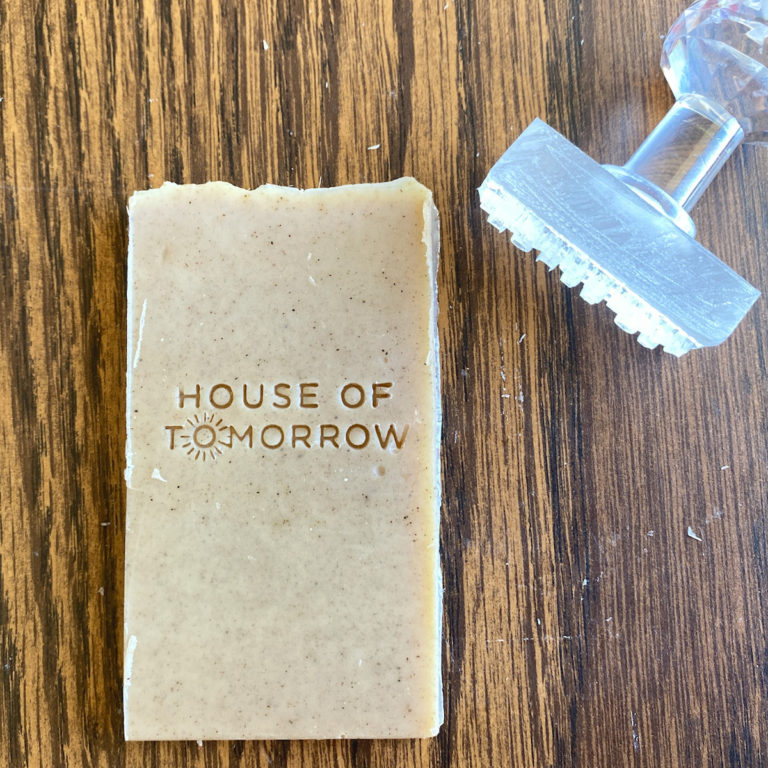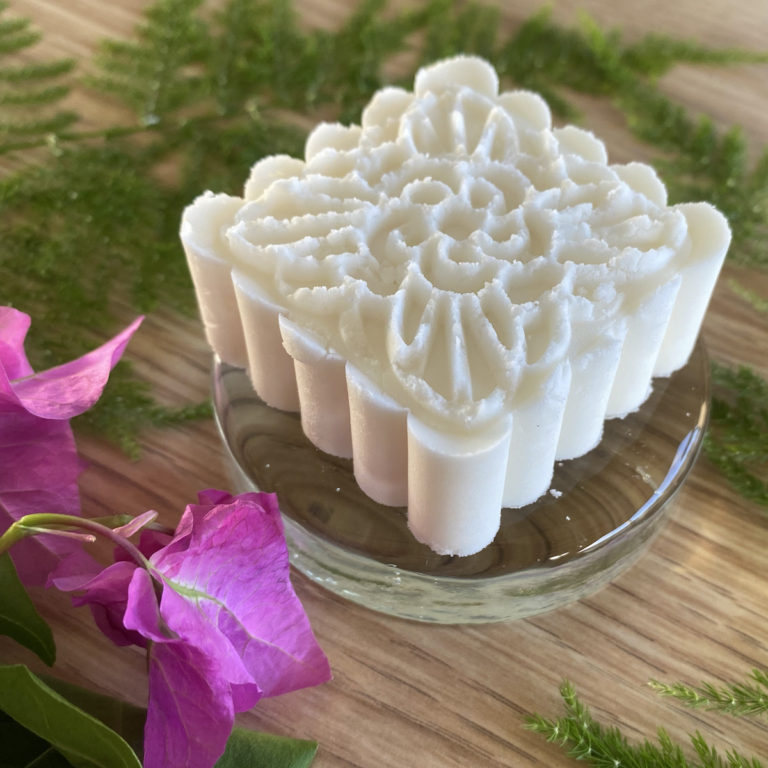Why Is My Homemade Soap Turning White

You’ve just made a gorgeously marbled loaf of cold process homemade soap and are ready to cut. It smells divine, is rich and smooth, and it turned out just the color you were going for. However, as it sits a day or two, a white film starts to come over it, but what is it, and why does it happen?
Your handmade soap is turning white likely because of soda ash. Also known as sodium carbonate, this layer forms when the lye in your soap batter meets the carbon dioxide in the air that surrounds it. The good news is it’s perfectly safe to use soap with soda ash on it.
Let’s get into more details about this weird phenomenon, why it may be happening in your particular situation, how to fix it, and how to prevent it in the future.
Why Your Soap Is Turning White
While this particular happening is strange, it comes down to a science. When the lye in your homemade soap is exposed to the air, it meets carbon dioxide. These two elements interact to create a layer of sodium carbonate, which most often appears as a light white, uneven dusting on the surfaces of your soap.
It may be on top at first until you cut into bars, at which time it may creep up on all edges that are exposed to the air. It can develop just hours after you uncover or slice up a fresh batch.
While it’s not detrimental to your soap, nor is it harmful in any way, it can be unsightly and interfere with enjoying the finer design details you put into your handmade soap.
Note: white spots or streaks inside or throughout your soap is likely a different problem and not soda ash.
What can cause or intensify the whitening on the surface of the soap?
- Tap water. Using tap water in your soap means you’re also using the impurities naturally found in tap water in your soap. These trace elements can react negatively during the process of making soap, which increases the risk of soda ash development.
- Exposure to air. The whole reason soda ash occurs is that the lye reacts with carbon dioxide. The air we all breathe is where the carbon dioxide is, so this is self-explanatory: exposure to air contributes to soda ash formation.
- Cool temperatures. Soda ash likes colder soaping temperatures. When your oil and lye solution is cooler, or if you’re making soap in a cold area, ash can be more likely to form. A room that’s 50°F (10°C), for example, is pretty chilly and will likely contribute to the formation of soda ash. Oil and lye temperatures below 95°F (35°C) are prime conditions for soda ash to form. Some experts even say the threshold is 85° F (29°C).
- Poured at thin trace. Some swirl designs, in particular, require thin soap, but pouring at a thin trace can set you up to be more likely for soda ash. This means you’re pouring when the oils and lye water have just emulsified. If you let it go, it will continue to thicken over time, which is a better time to pour.
How to Remove the White Film From Your Handmade Soap
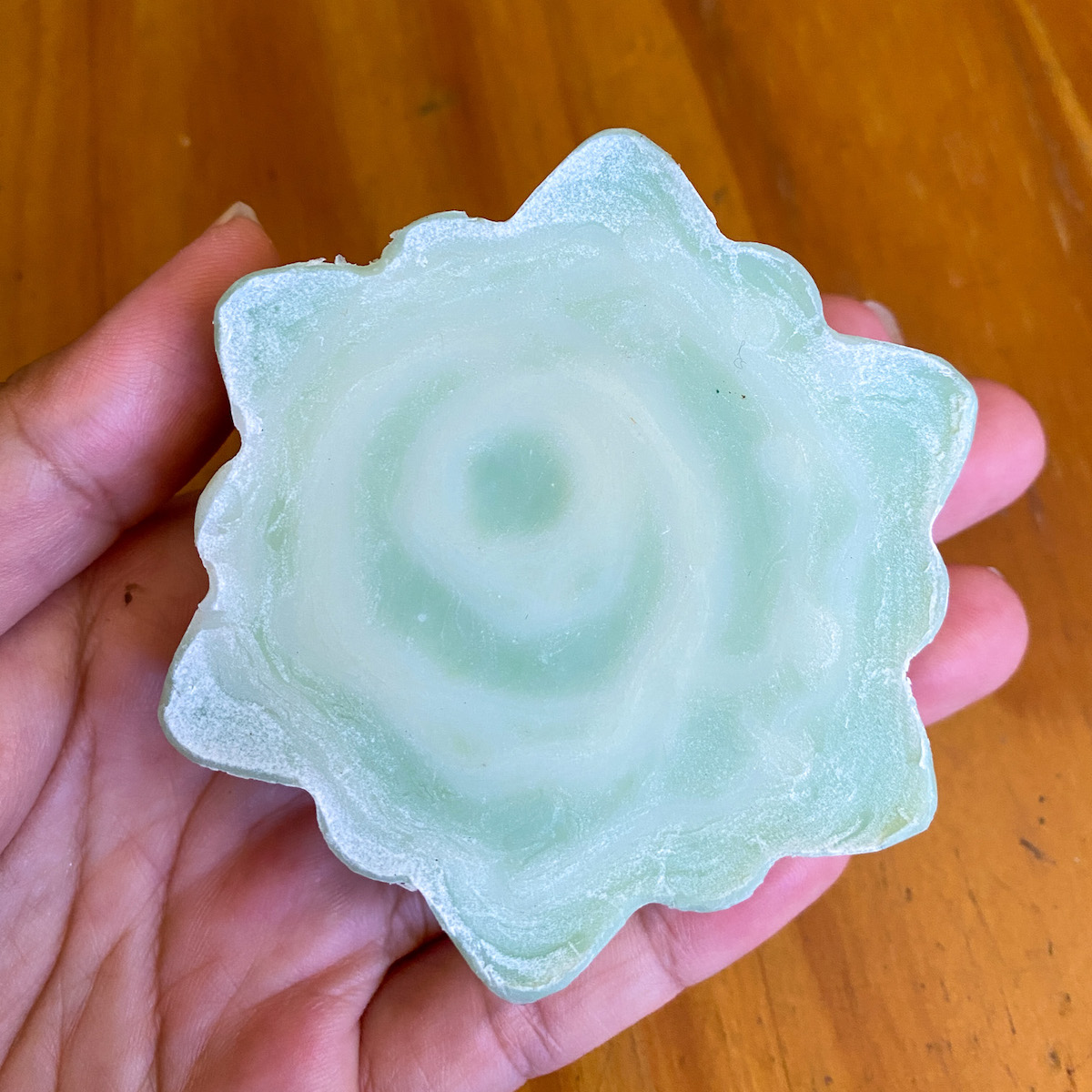
The good news is that the layer of soda ash is not only harmless but it’s also usually removable.
Rinse It
Perhaps the most straightforward solution once soda ash has struck is to gently rinse your bar under running water or dip it in a water bath. Even if you choose not to remove your soda ash, the white layer usually washes away during the first or second regular use of the soap as it gets rinsed with water during use.
Steam It
A simple handheld steamer you’d use on a blouse will also whisk away that dusty white layer on your soap. If you don’t have one available, you can also very carefully hold your soap in the path of steam from a boiling pot of water or whistling tea kettle. Take care to protect your skin so you don’t suffer steam burns.
Shave or Dab It
Using a soap planer, you may simply shave away the affected areas to rid your bars of that white dust.
You can also try blotting a dash of rubbing alcohol on a lint-free cloth and rubbing gently over the surface of the soap. Rub in one consistent direction to keep the surface looking polished and smooth, and the ash will come right off.
Deal With It (and Learn to Love It)
Rather than changing your formula and technique or trying to remove the ash, why not change your perception and embrace that powdery addition to your soap? Some soap makers use soda ash to their advantage and plan it into their design, using it to soften the colors and accentuate texture across whipped peaks on top.
Maybe if you leave the soda ash as it lands, you’ll learn to love it as part of the charm of an always unique handcrafted product — and others will too.
Tips to Prevent Soda Ash
Here are some tips so your next batch of homemade soap doesn’t turn white.
Use Pure Water
Since tap water can contain too many added minerals and impurities that throw off your soap recipe, instead, try using deionized, distilled, or reverse osmosis water. The use of pure, filtered water should simplify your recipe and eliminate this factor as a possible contributor to soda ash.
Cover It Up
The more you can protect your raw homemade soap from the air around it, the better. It’s not realistic to completely prevent air from getting at the surface of your raw soap, so just do your best to limit it when you can.
After it’s mixed and poured, cover your soap to keep the air out as it cures. A piece of saran wrap over the edge of your mold, a storage tub with a lid to put your whole mold into, or even a piece of plywood over the top will work fine to keep the air out. Just make sure your lid or cover doesn’t touch your soap.
Especially if you’re working in cooler temperatures or during a colder weather season, leave your freshly-poured soap in its mold for at least three whole days, and even better, up to a week, before you uncover it.
According to Jan at The Nerdy Farm Wife, you can also spritz 99% isopropyl alcohol across the top of your soap to form a protective layer. You can find some for under $10 on Amazon, such as this 8-oz bottle by Eternal. Spray right away after it’s poured and again 15 minutes later.
Turn Up the Temperature
Temperature can be a tricky thing, as it’s a bit subjective based on what works for different people, various recipes, and depending on the climate you’re making soap in. Since soap making at colder temperatures can contribute to more soda ash, aim to turn up the temperature a bit. Oil and lye temperatures around 95 to 110°F (35 to 43°C) are ideal for beautiful, ash-less soap.
Pour at Medium Trace
After warming up your lye and oils to the ideal temperature, try pouring when the mixture is closer to medium trace or even leaning towards thick. We’re talking gravy to almost pudding consistency. For many soapmakers, this makes a big difference in eliminating soda ash.
Conclusion
If your homemade soap turning white had you starting to worry, hopefully, the information in this article has put your mind at ease. That pesky white layer is understandably frustrating, but it is purely cosmetic, harmless, removable, and preventable. Good luck with your next batch of handmade soap, and may it be your best yet!


